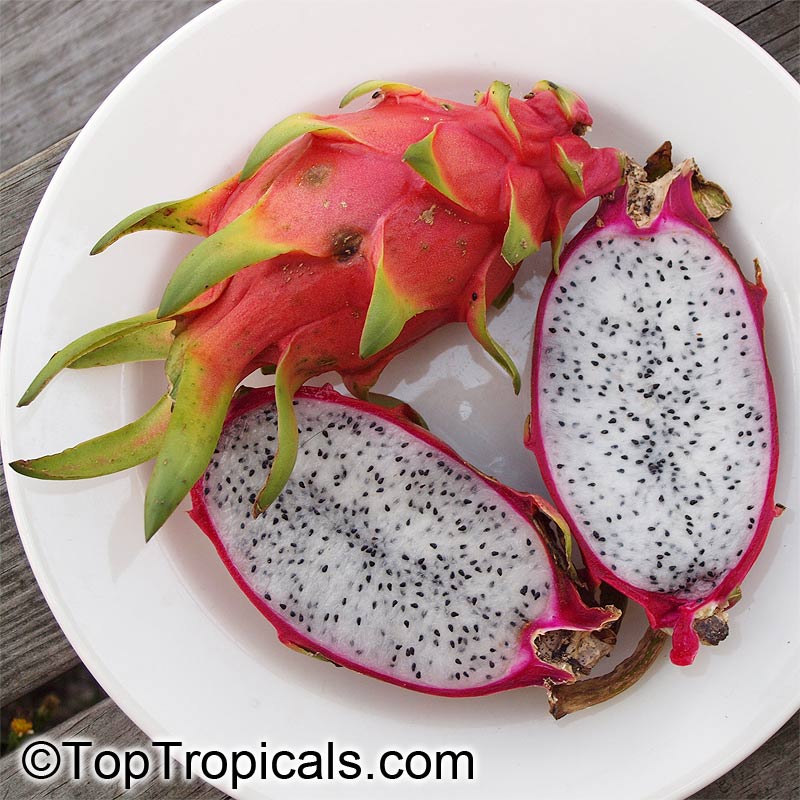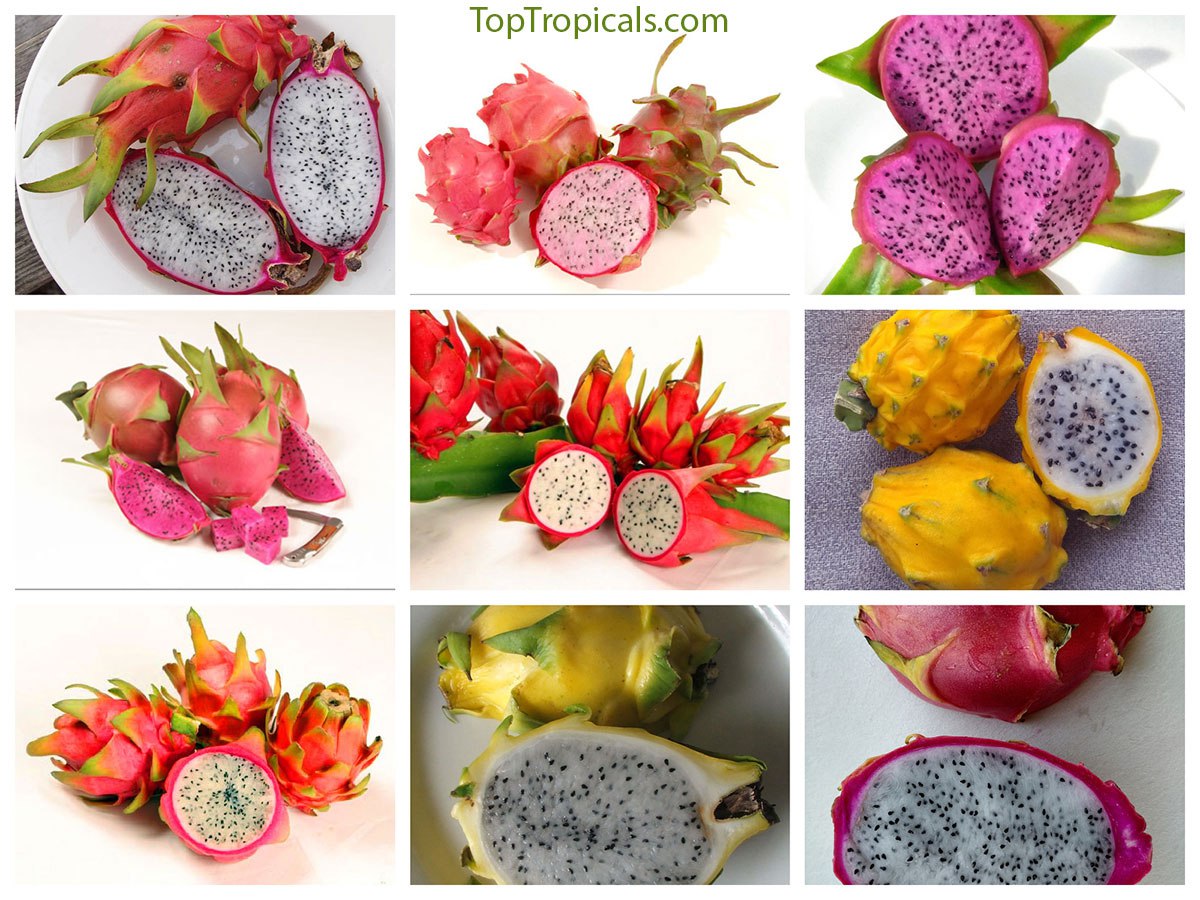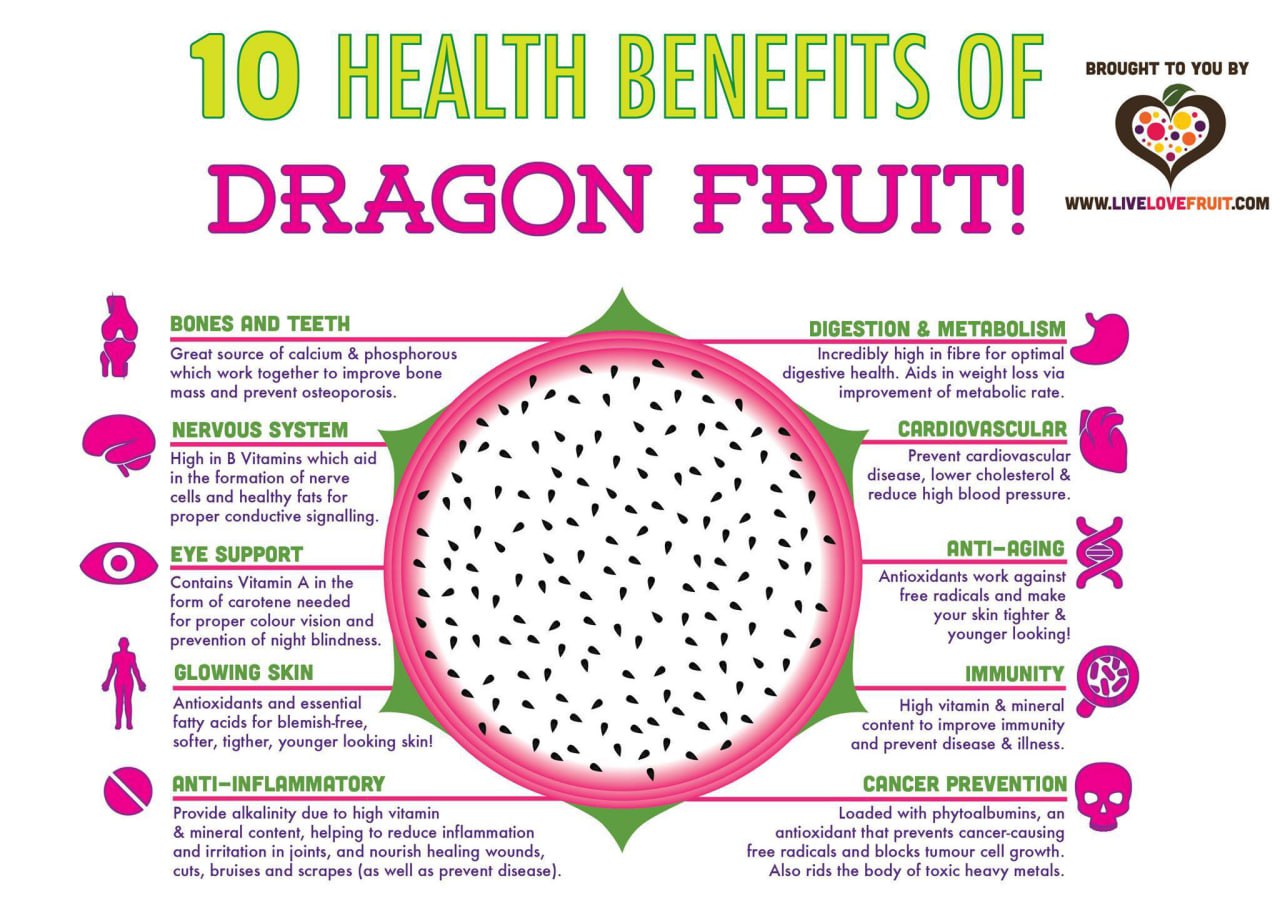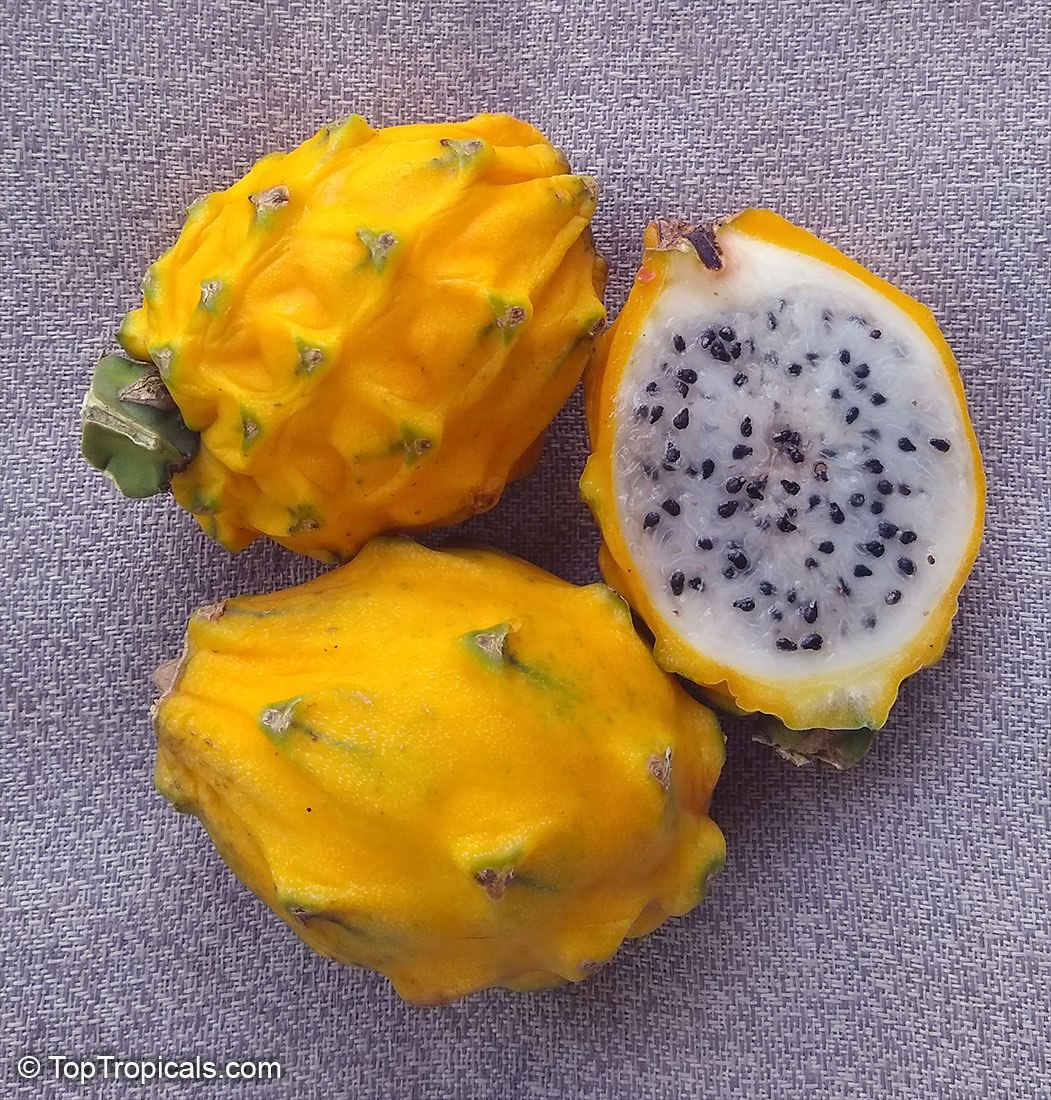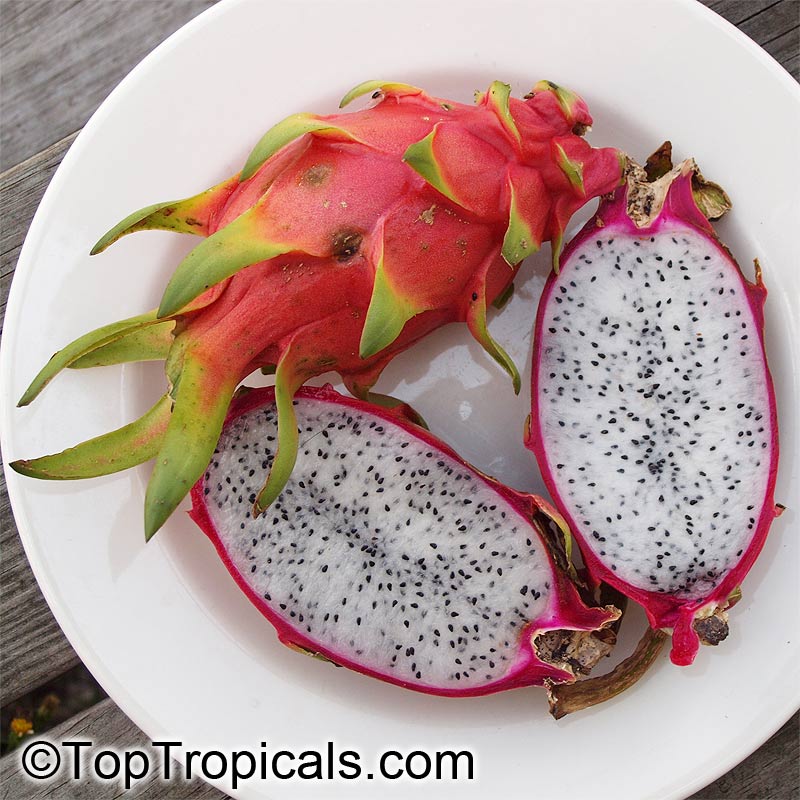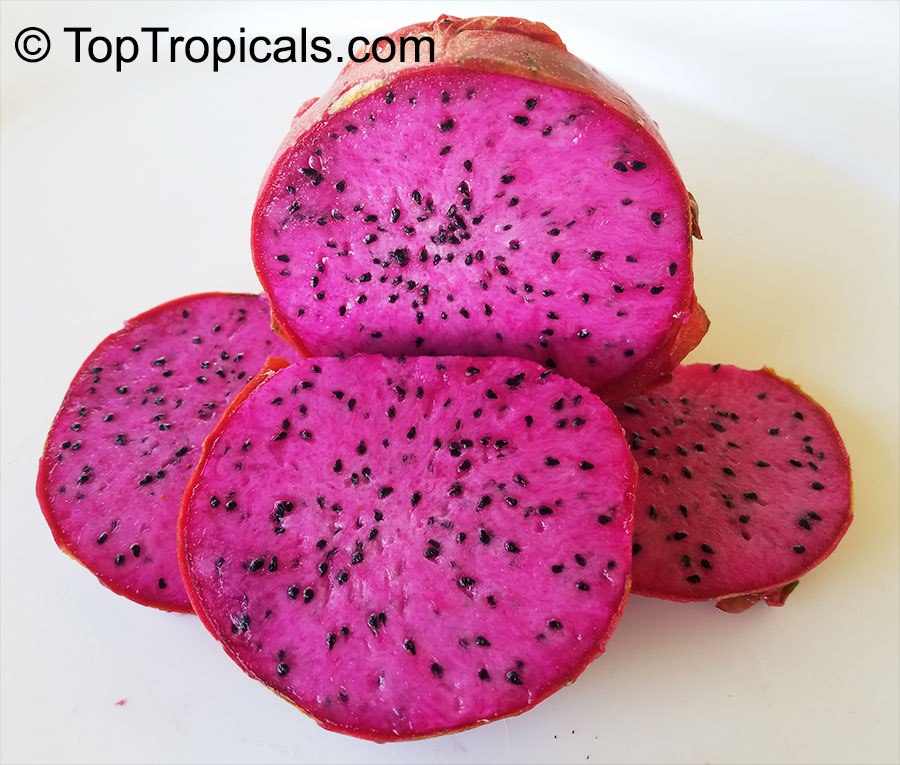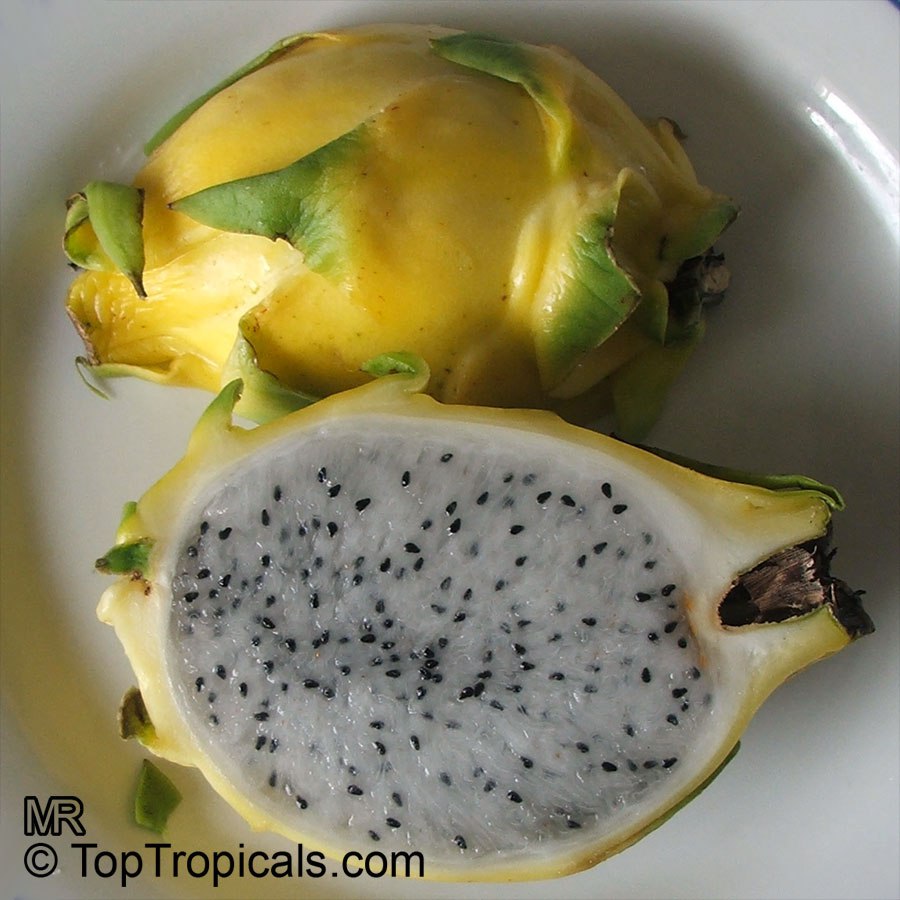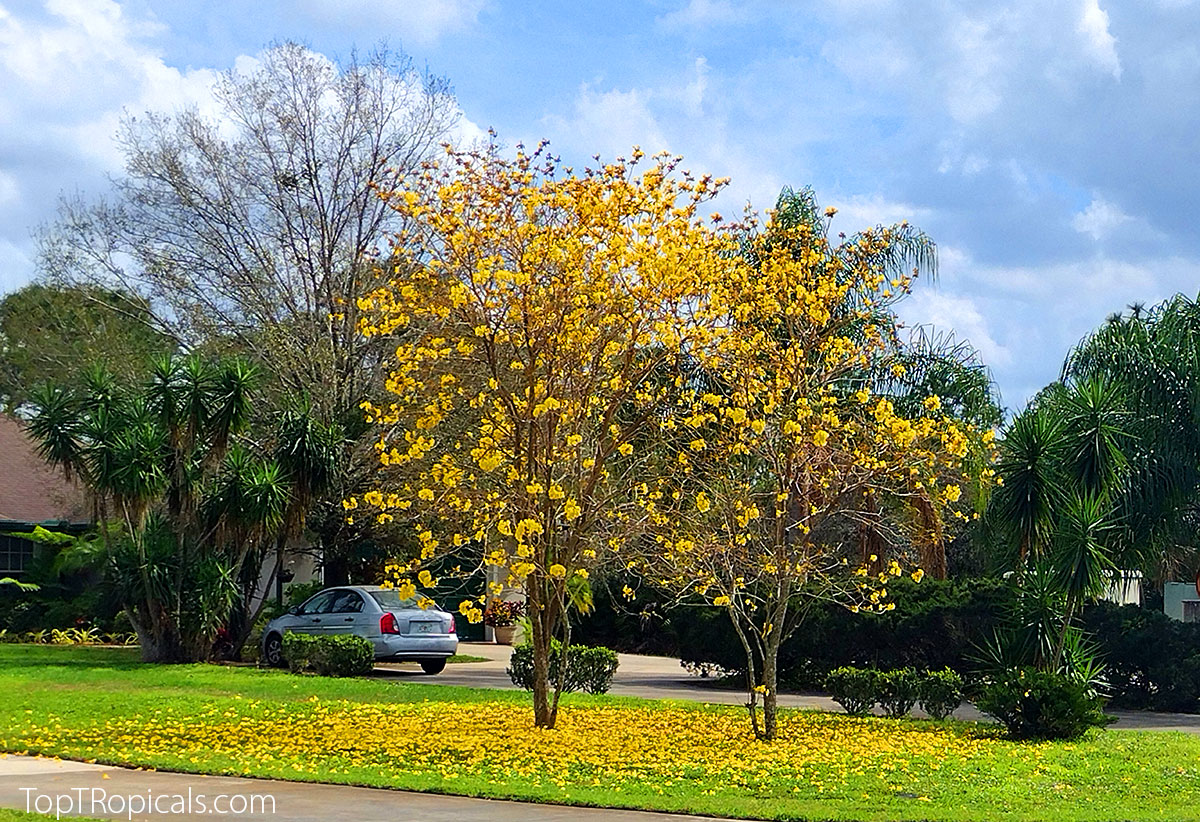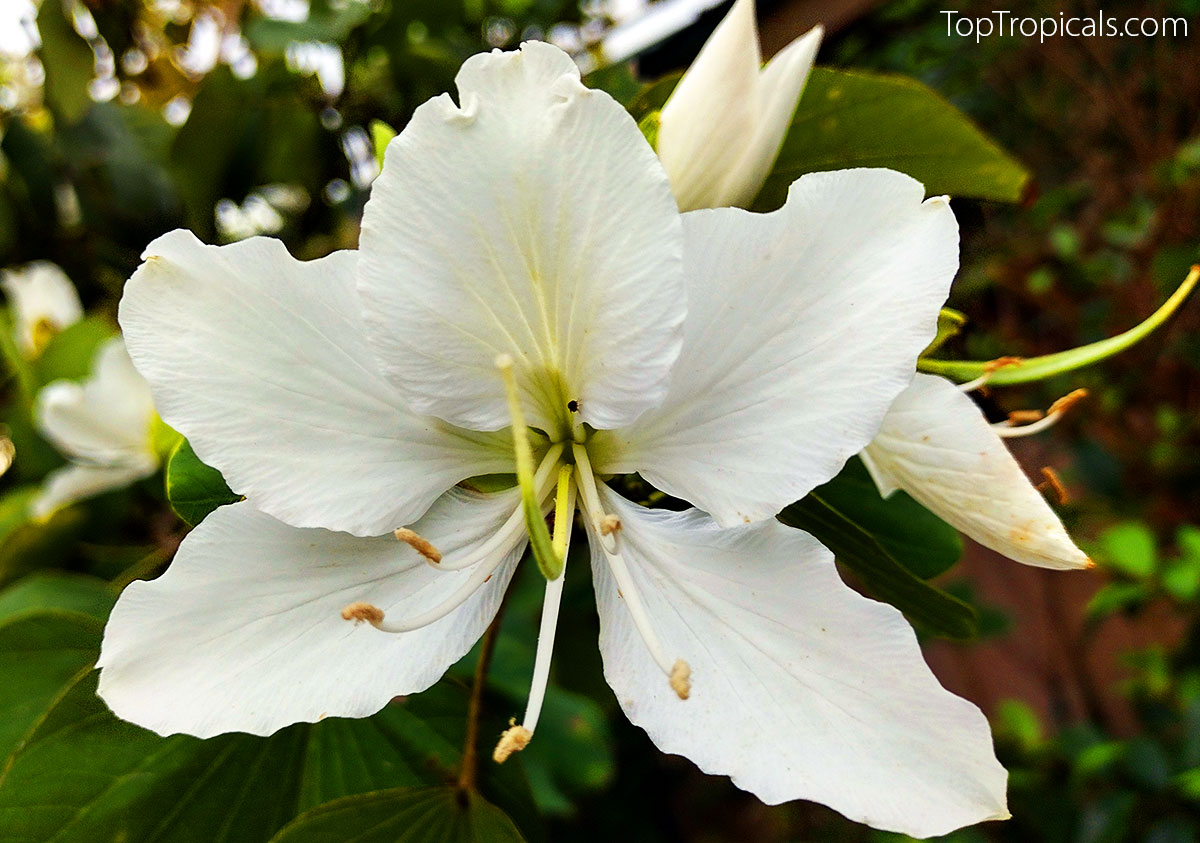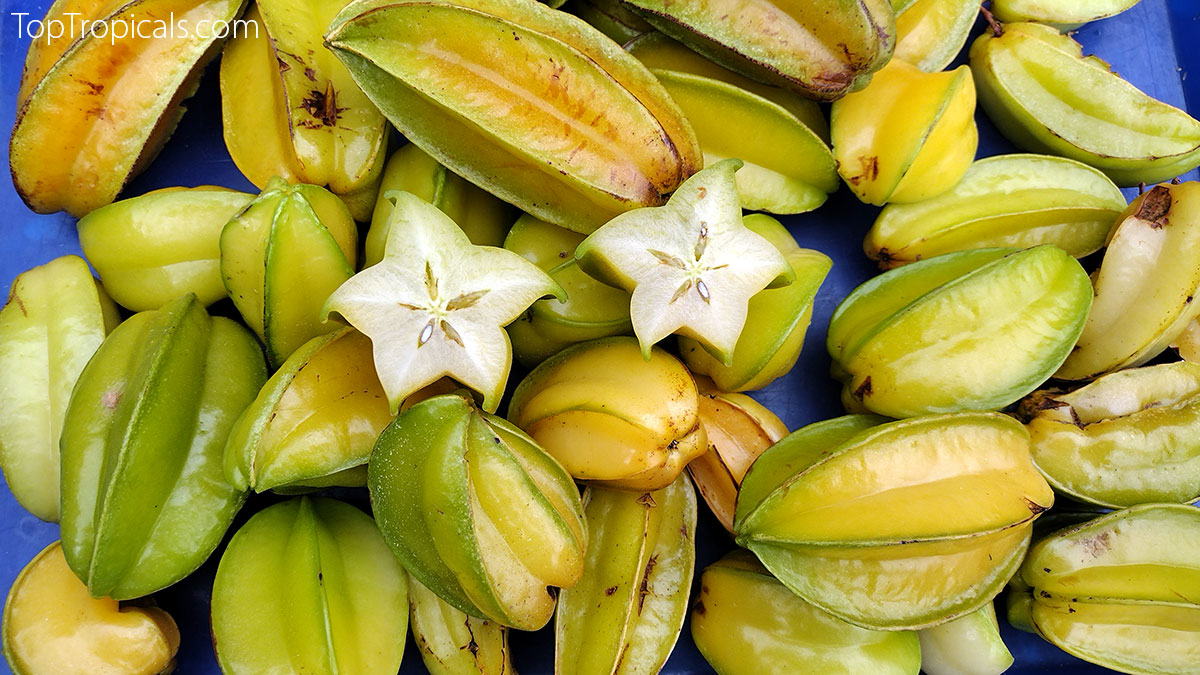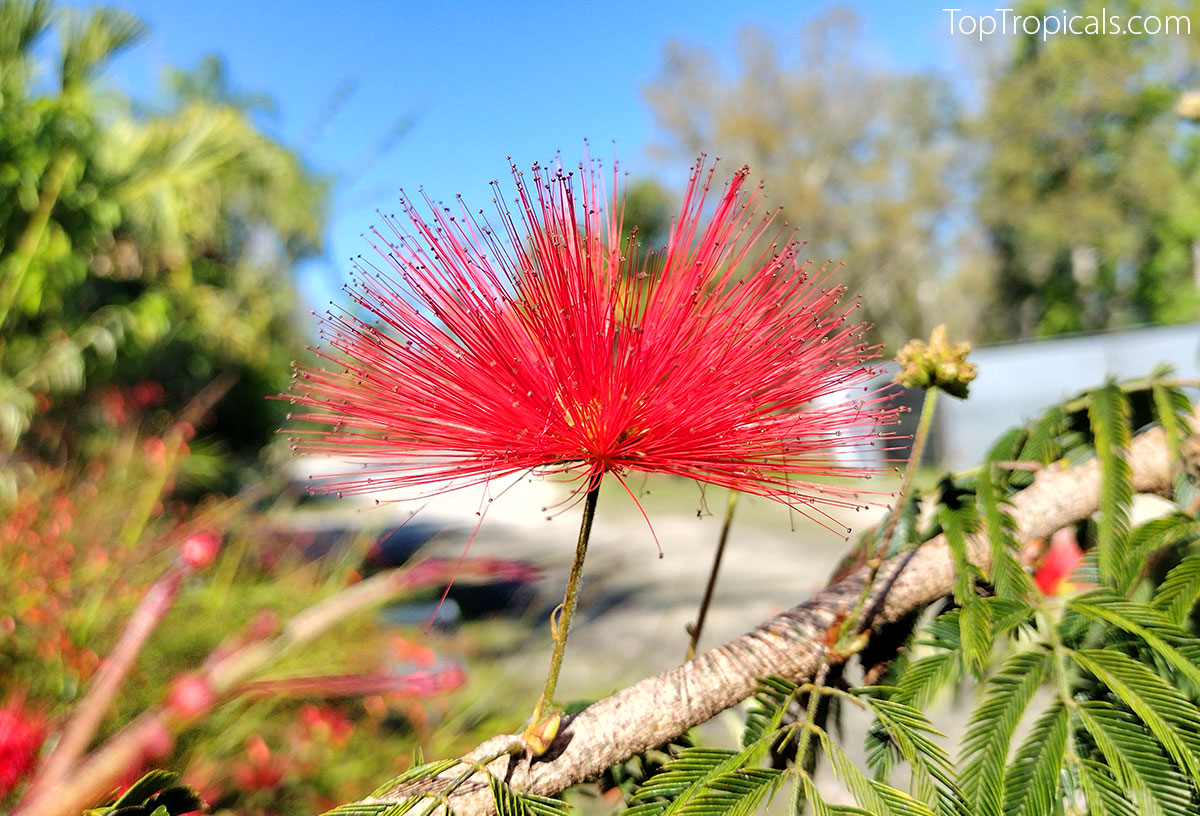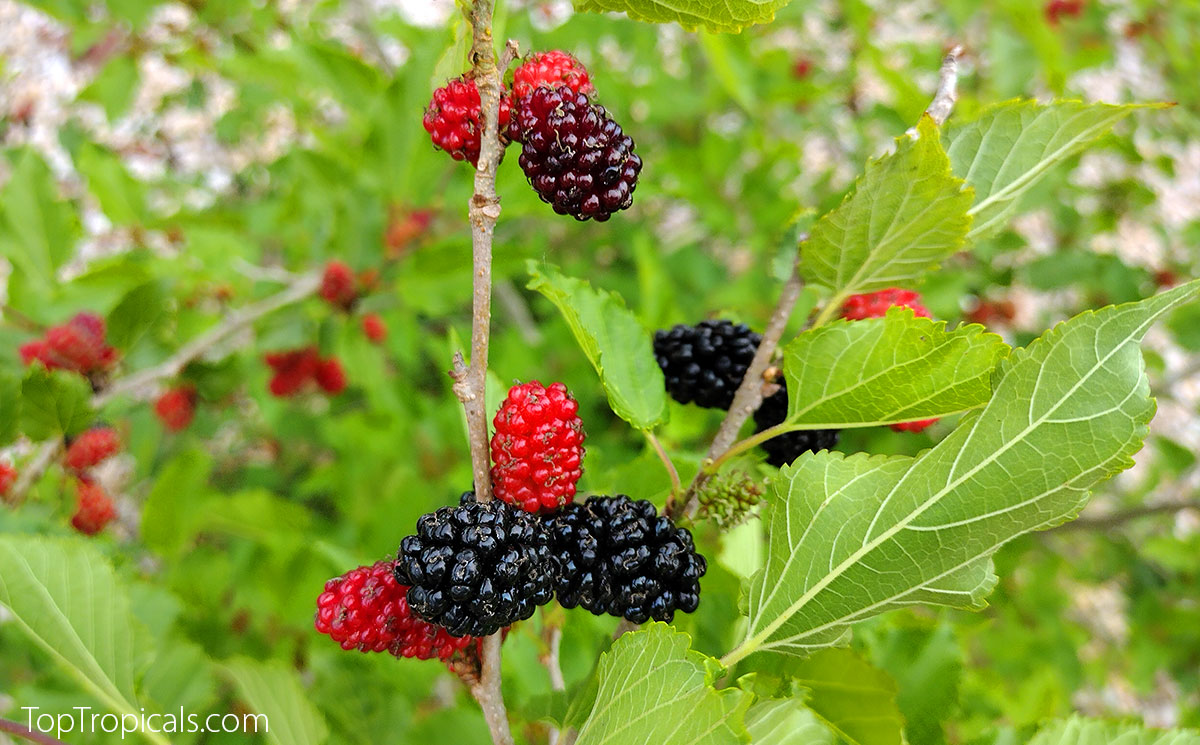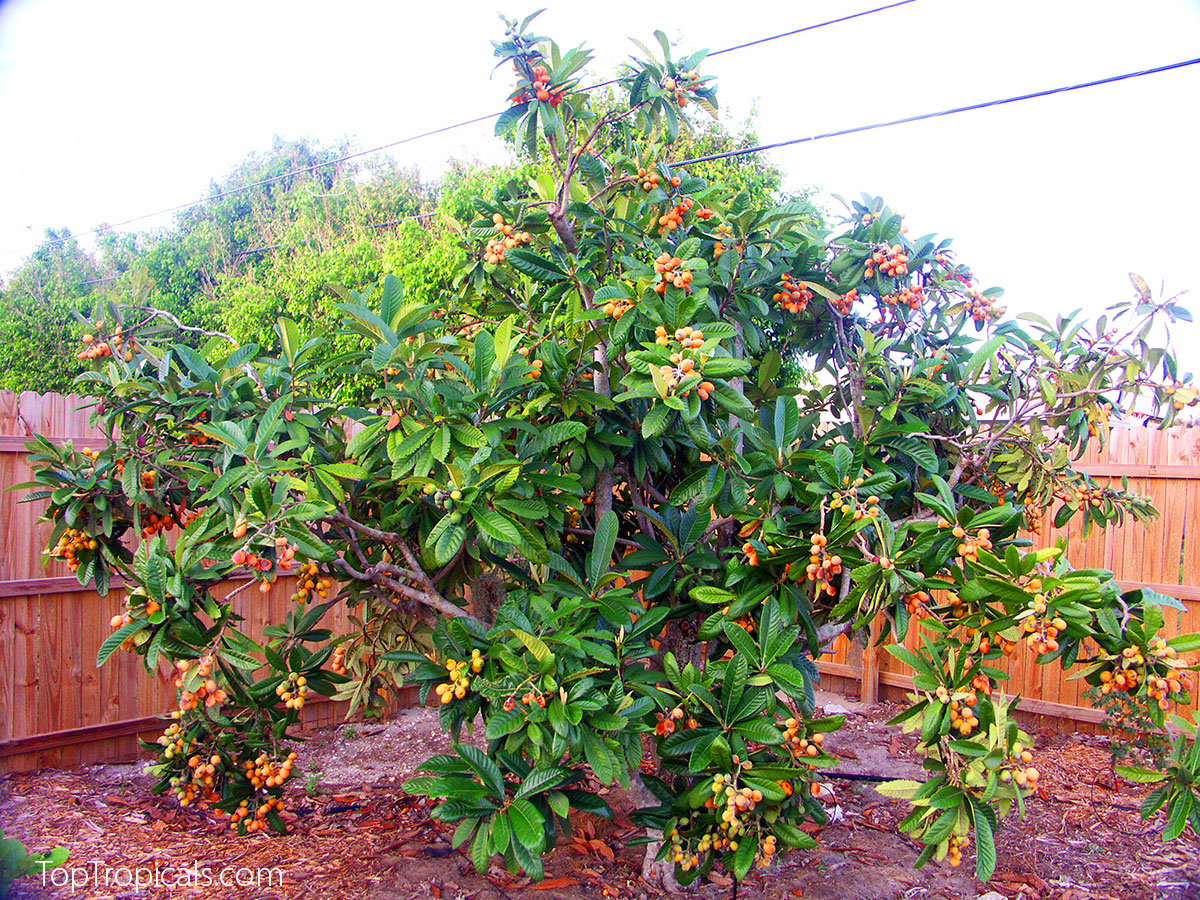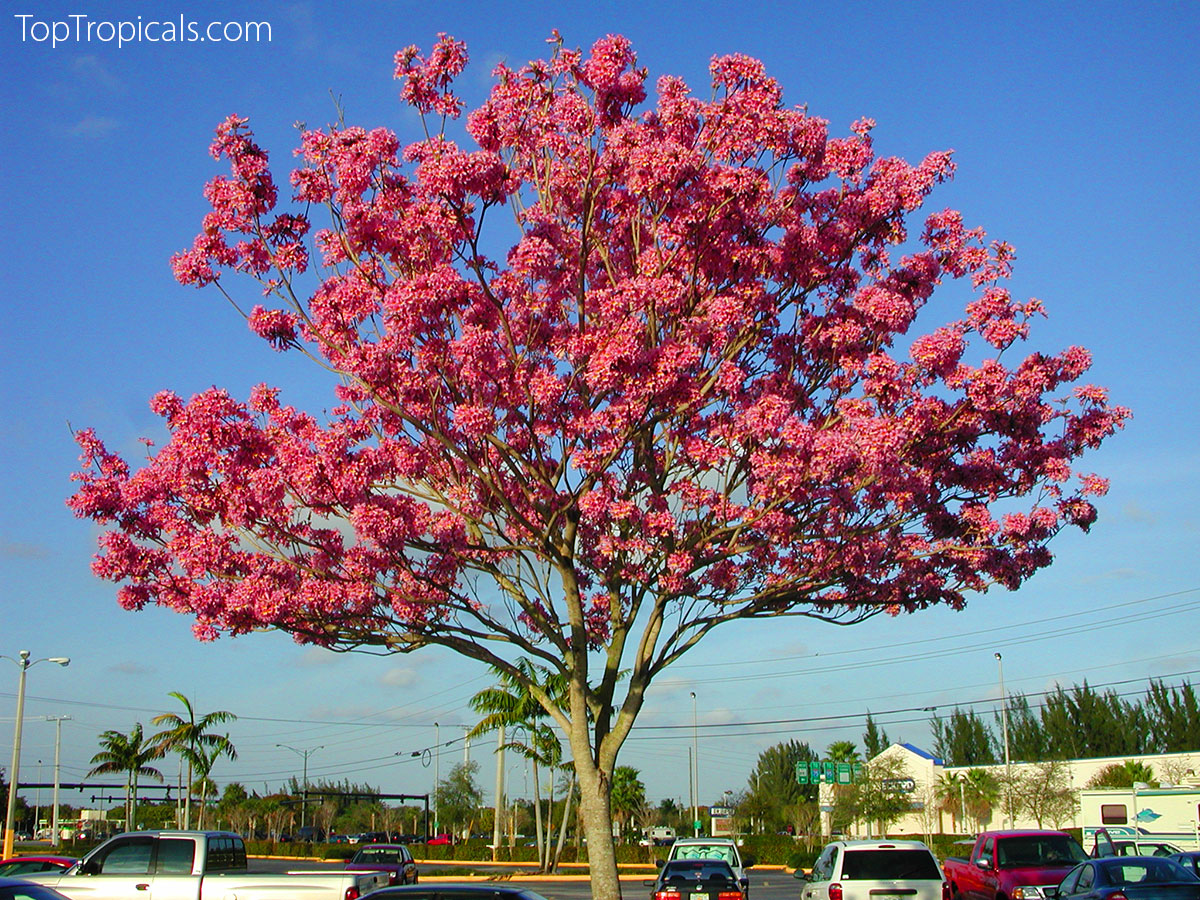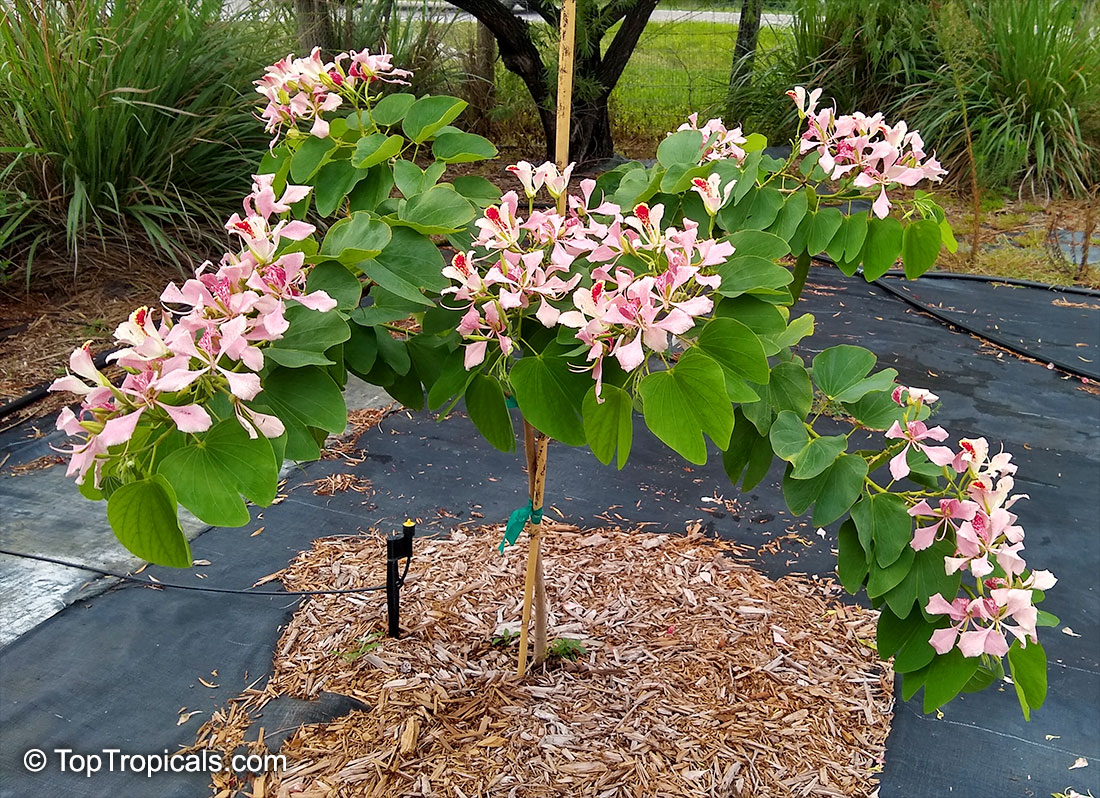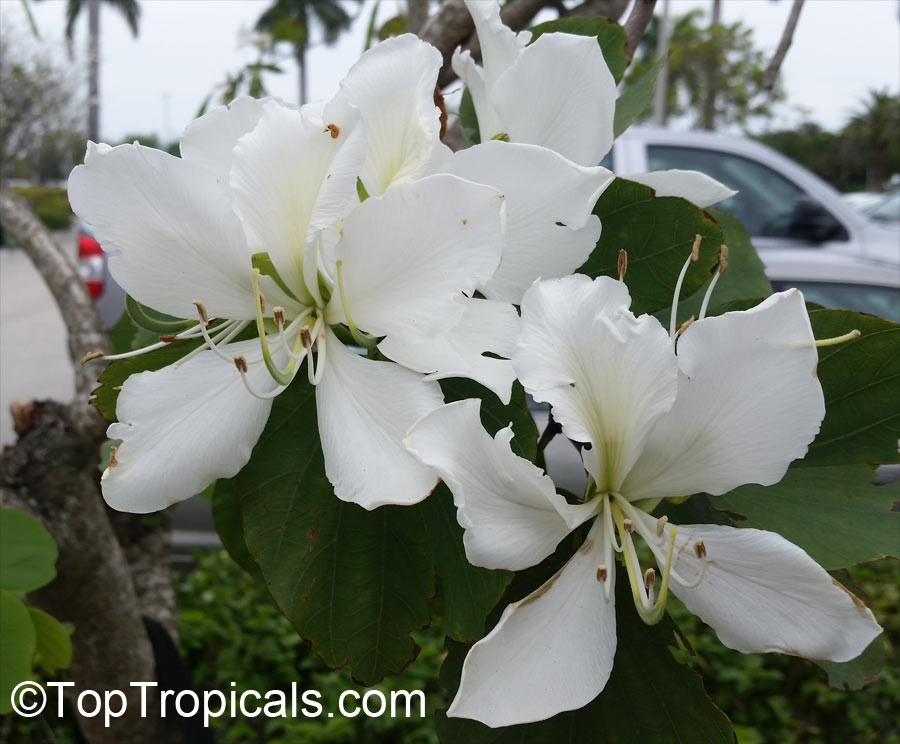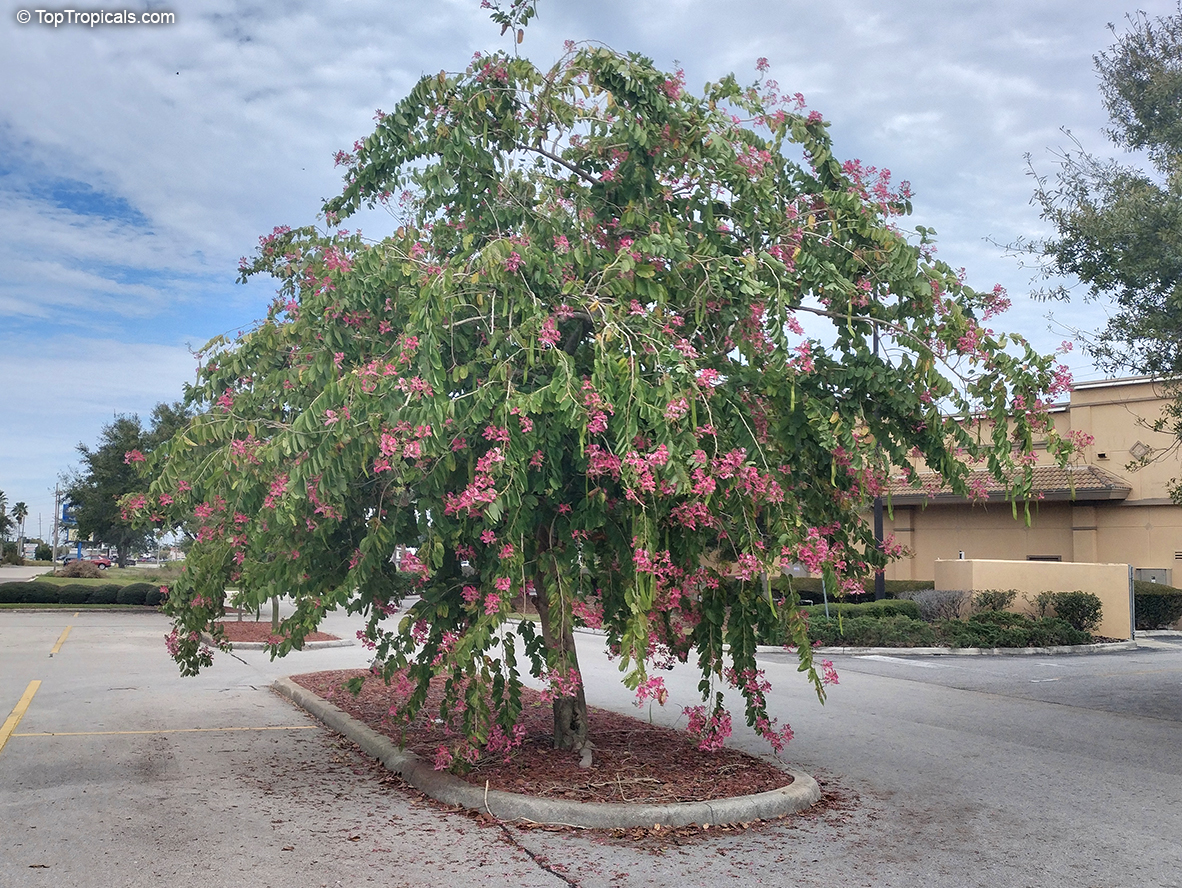Garden Blog - Top Tropicals
Date:
Discover 10
best fruit trees to grow
in Florida and Southern landscapes
Q: We recently moved into our new home in Florida, and the property is a great size - 5 acres - but it currently has no trees, just a few palms. I'm looking to plant some productive fruit trees to start building our own Food Forest. What fruit trees would you recommend as a good starting point?
A: With five acres of space, you have a fantastic opportunity to create a fruitful garden that can provide for your family for many years to come. Below are our top recommendations for must-have, easy-to-grow fruit trees that thrive in Florida's climate, grow quickly, and start producing right away.
1. Mango Tree
Mango trees (Mangifera indica) are a must-have for any Florida garden, embodying the essence of the Sunshine State with their delicious and nutritious fruit packed with vitamins and fiber. These fast-growing, low-maintenance trees thrive with minimal water and are heat-tolerant. Grafted varieties produce high-quality, fiberless fruit in just 2-3 years, while dwarf "condo" mangoes are perfect for smaller spaces or containers. While young trees need frost protection, mature trees handle cold better. Grafted mangoes offer rich taste that you won't find in commercially grown, fibrous varieties, ensuring a sweet and vibrant harvest from your own garden.
2. Avocado Tree
The Avocado tree (Persea americana) is an essential addition to any tropical or subtropical garden. Known for its health benefits and superfood status, it's a favorite fruit that's not only productive but also a beautiful ornamental tree. Some avocado varieties are more cold-tolerant than mango trees, with the ability to survive temperatures below 25F. While many enjoy growing avocado from seed, only grafted trees guarantee quality fruit and immediate production, as seedlings can take 7-8 years to bear fruit. To successfully grow avocado, ensure good drainage by planting on a raised mound (4-6 inches) and keep the soil consistently moist. There are also compact varieties like Wurtz and Fuerte that thrive in containers or small spaces, making them ideal for patios and small gardens.
3. Tropical Cherries
Tropical cherries, such as Cherry of the Rio Grande (Eugenia aggregata), Grumichama (Eugenia brazilensis), Pitomba (Eugenia luschnathiana), and Black Surinam Cherry (Eugenia uniflora var. Lolita), are popular and easy-to-grow fruit trees that offer fast growth and excellent fruit production. These compact, versatile trees thrive in both the ground and containers, starting to produce fruit almost immediately. Eugenias are low-maintenance, requiring minimal water, thriving in various soil types, and being pest-free. They are heat-tolerant and can endure cool winters, surviving light frosts. Birds love the fruit, but don't worry - there will always be plenty for everyone.
4. Barbados Cherry Tree
Barbados Cherry (Malpighia glabra), also known as Acerola, is a tropical cherry renowned for having the highest vitamin C content of any fruit. This nutrient-packed fruit is perfect for jellies, jams, and freezing without losing its vitamin C. The Barbados Cherry is a fast-growing, dense shrub that fruits multiple times a year, providing abundant harvests for gardeners seeking quick results. It thrives in alkaline soil, tolerates drought, and is relatively cold-hardy, withstanding light freezes. Birds love the fruit, making it a great addition to wildlife-friendly gardens. The dwarf variety, Nana, with its small leaves and fruit, is perfect for containers, borders, or even bonsai, adding ornamental value to any space.
5. Noni Tree
The Noni Tree (Morinda citrifolia) is a top superfood plant that makes a fantastic addition to any Southern garden. Known for its numerous medicinal benefits, Noni fruit offers anti-inflammatory properties, relief from arthritis, and support for conditions like diabetes, metabolism, and weight loss. It's even believed to help fight cancer. Noni trees grow quickly and begin producing fruit within 2 years from seed. This tough, resilient plant thrives in poor soil, endures summer heat, and withstands drought conditions. Despite its tropical appearance, Noni is surprisingly cold-hardy, recovering well after leaf damage in cooler weather. In addition to its health benefits, the Noni tree has ornamental value, with large, waxy leaves and unique fruit, where the flower appears to grow directly on the fruit!
6. Macadamia Nut Tree
The Macadamia Nut Tree (Macadamia integrifolia) is a fantastic addition to any garden, allowing you to grow these delicious, high price tag, nutrient-rich nuts right at home. These trees are cold-hardy, grow quickly, and thrive in all Florida soil types. Once established, they are productive and can tolerate both flooding and drought. Older trees can survive colder winters, while young trees need protection from temperatures below 25-26F. Macadamia trees like plenty of water and a special fertilizer program, including liquid fertilizers and microelements, to ensure healthy root development and optimal production. Aside from being rich in healthy fats, vitamins, and minerals, macadamia nuts offer numerous health benefits, such as improved digestion, heart health, weight management, and blood sugar control. They are also packed with tocotrienols - antioxidants which may protect against cancer and brain diseases.
7. Papaya Tree
Papaya trees (Carica papaya) are resilient, easy to grow, and produce fruit year-round. Rich in papain, a digestive enzyme, papayas are a superfood that promotes gut health. These fast-growing trees often begin producing fruit within the same year they're planted, providing quick rewards for gardeners. Many varieties, especially dwarf papayas, are space-efficient, reaching only 6-8 feet tall while still yielding large crops, making them perfect for small gardens. Surprisingly hardy for a tropical plant, papayas can withstand light freezes and strong winds (tested in hurricanes!). While they are self-fertile, planting 2-3 different cultivars improves pollination and increases yields. "Solo" cultivars, with their smaller, round or oval fruits, are sweet and less susceptible to fruit flies.
8. Guava Tree
Guava trees are beloved for their flavorful fruit, commonly used in juices, drinks, and desserts. Popular varieties include Tropical Guava (Psidium guajava), Cattley Guava (Psidium littorale), Cas Guava (Psidium friedrichsthalianum), and Pineapple Guava (Feijoa sellowiana). Despite their tropical nature, guavas are surprisingly cold-hardy, suitable for cooler climates and occasional frost. These trees thrive in moist conditions and can tolerate some flooding, while their compact growth makes them easy to maintain at any height or shape. Guavas are fast-fruiting, often producing fruit within a year of planting, and even some varieties in 1 gal containers. The dwarf Nana variety is perfect for container culture, producing full-sized fruit in a compact form. Guava trees are mostly pest-resistant, though mealybugs may require occasional treatment with neem oil in humid, rainy areas. Planting multiple guava trees ensures a continuous supply of fresh, juicy fruit and delicious guava juice for everyone to enjoy.
9. Jackfruit Tree
The Jackfruit tree (Artocarpus heterophyllus) is a striking, fast-growing tree known for producing the largest fruit grown on a tree, making it a showstopper in any garden. Nutrient-packed and often used as a meat substitute in South Asian cuisine, Jackfruit is also delicious in curries, chutneys, and as dehydrated chips. These trees grow quickly, have large waxy leaves, and can be maintained at a compact height of 7-8 feet, making them ideal for smaller spaces and easier cold protection. Despite being a tropical species, Jackfruit trees are relatively cold-tolerant and can survive light frost (although on the account of production volume), with established trees being more hardy than seedlings. Jackfruit trees begin producing fruit within 3-4 years from seed, and varieties come true to seed, eliminating the need for grafting, though it can be done for specific varieties.
10. Loquat Tree
The Loquat tree (Eriobotrya japonica) is a fast-growing, drought-tolerant, and highly cold-hardy tropical fruit tree that thrives in Florida gardens. Loquats are heavy producers, with juicy, aromatic fruit that ripens from early spring to early summer, offering a delicious apricot-like flavor. This compact tree is perfect for small gardens, beginners, and those with limited space. Loquats are undemanding, thriving in any soil and withstanding summer heat, winter cold, heavy rains, and occasional flooding. Nutrient-rich, they are high in sugar, acids, vitamins B and C, minerals, and pectin. Loquats are versatile, enjoyed fresh or used in fruit salads, jams, jellies, chutneys, pies, sauces, and even wine-making, and they are often used as a natural sweetener.
What does a dragon taste like? Does Dragon Fruit come from a monster cactus? Learn why you need to grow your own
🔴 You may have tried a Dragon fruit from the store l, but do you know how it grows? On a cactus tree!
🔴 Names: varieties of Hylocereus and Selenicereus - these fruit bearing cactus plants are also called Dragon Fruit or Pitaya.
🔴 Commercially grown fruit sold in a grocery store may be tasteless. You need to grow your own good variety to have tasty, sweet, flavorful fruit!
🔴 Dragon fruit comes in many varieties. Colors of flesh differ: white, pink, dark red and even purple. The outside of the fruit can be red/pink or yellow.
🔴 In commercial groves, Pitayas grow like cactus trees, over a strong support - big "umbrella frames" ☂️
🔴 It is an easy plant, with low water needs, takes both sun and semi-shade.
🔴 Our favorite variety is Yellow Dragon Fruit Palora, (Selenicereus megalanthus). It is the sweetest and has the most flavor of all. We shared some recipes earlier.
🔴 Can be grown in container with a wooden trellis. And the flower is beautiful, too!
📚 Learn more about Dragon Fruit
🍹 Recipe: What to do with a Dragon fruit?
🛒Grow your own Tasty Dragon Fruits
#Food_Forest #Recipes #Nature_Wonders #Dragon_Fruit
🏵 TopTropicals
Grow Your Own Exotic Dragon Fruit Garden - Part 3
Continued from previous post ⤴️
🛍 Limited-Time Offer:
This week only, enjoy an instant 5% discount on all dragon fruit plants, no code needed! Hurry - some varieties are in limited supply and highly sought after!
🎮 Explore Our Unique Varieties:
📚 Learn more about Dragon fruit:
- · How to make Dragon Fruit Smoothie - what to do with a Dragon Fruit
- · Does Dragon Fruit come from a monster cactus? Learn why you need to grow your own
- · Do red, white and yellow Dragon fruit taste differently?
- · What does Dragon Fruit Flower look like?
- · Top 10 fruit you'll ever need for your health benefits: #6 Dragon fruit
🛒 Start your dragon fruit journey today and savor the unmatched flavors of homegrown, exotic fruits!
#Food_Forest #Discover #Dragon_Fruit
🔴 Join 👉 TopTropicals
Grow Your Own Exotic Dragon Fruit Garden - Part 2
Continued from previous post ⤴️
➕ 10 HEALTH BENEFITS OF DRAGON FRUIT
- 💚 BONES AND TEETH
- 💚 NERVOUS SYSTEM
- 💚 EYE SUPPORT
- 💚 DIGESTION / METABOLISM
- 💚 CARDIOVASCULAR
- 💚 ANTI-AGING
- 💚 GLOWING SKIN
- 💚 IMMUNITY
- 💚 ANTI-INFLAMMATORY
- 💚 CANCER PREVENTION
Great source of calcium & phosphorous which work together to improve bone mass and prevent osteoporosis.
High in B Vitamins which aid in the formation of nerve cells and healthy fats for proper conductive signalling.
Contains Vitamin A in the form of carotene needed for proper colour vision and prevention of night blindness.
Incredibly high in fibre for optimal digestive health. Aids in weight loss via improvement of metabolic rate.
Prevents cardiovascular disease, lowers cholesterol & reduces high blood pressure.
Antioxidants work against free radicals and make your skin tighter & younger looking!
Antioxidants and essential fatty acids for blemish-free, softer, tighter, younger looking skin!
High vitamin & mineral content to improve immunity and prevent disease & illness.
Provides alkalinity due to high vitamin & mineral content, helping to reduce inflammation and irritation in joints, and nourish healing wounds, cuts, bruises and scrapes (as well as prevent disease).
Loaded with phytoalbumins, an antioxidant that prevents cancer-causing free radicals and blocks tumour cell growth. Also rids the body of toxic heavy metals.
Continued in next post ⤵️
🛒 Start your dragon fruit journey today and savor the unmatched flavors of homegrown, exotic fruits!
#Food_Forest #Discover #Dragon_Fruit
🔴 Join 👉 TopTropicals
Grow Your Own Exotic Dragon Fruit Garden - Part 1
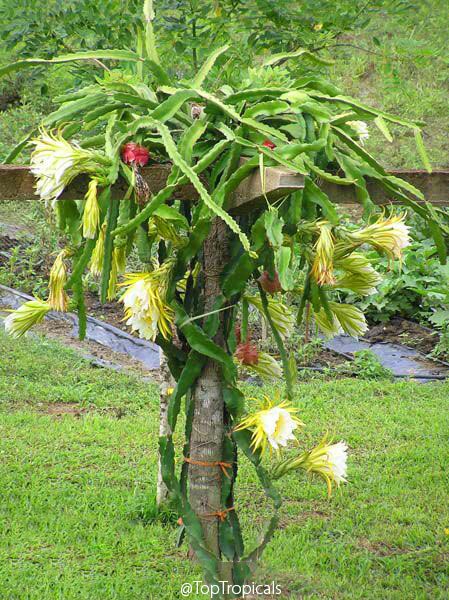
Dragon Fruit - Pitaya
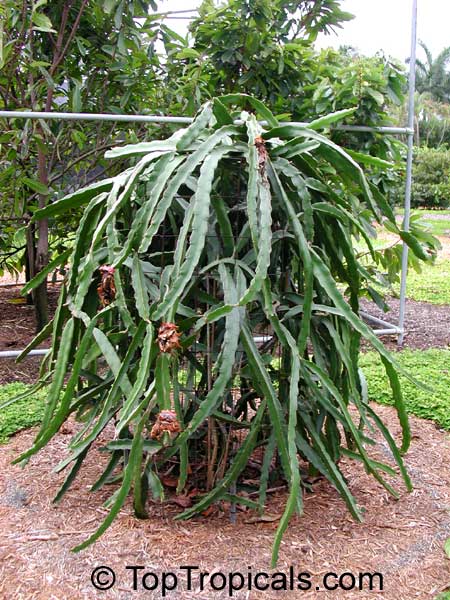
Dragon Fruit - Pitaya
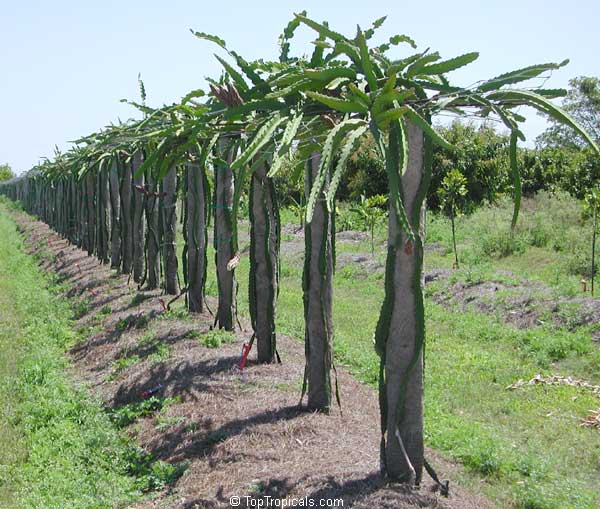
Dragon Fruit - Pitaya
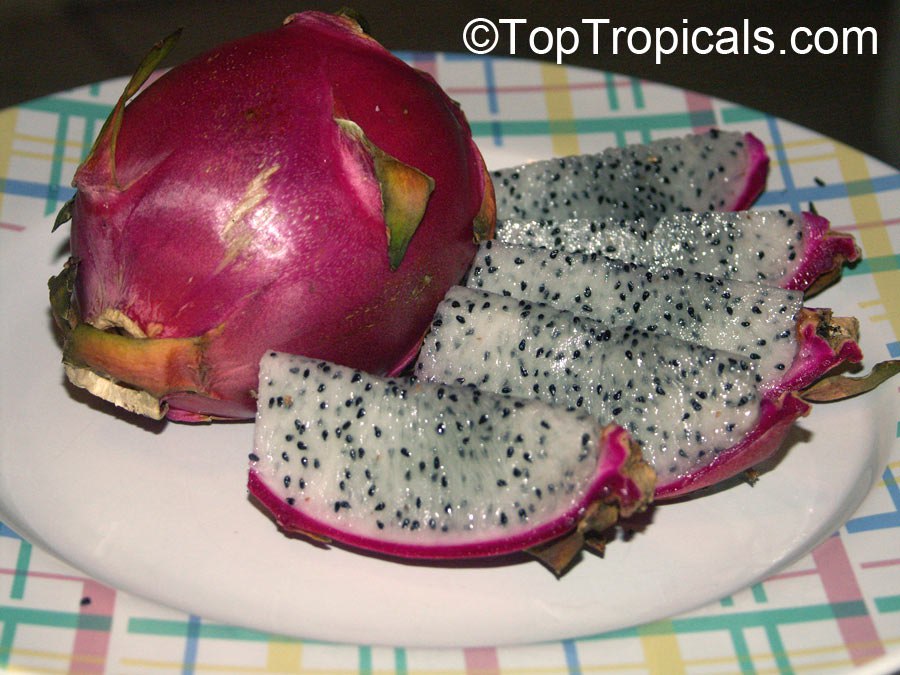
Dragon Fruit - Pitaya

Sunshine C-Cibus fertilizer for Dragon Fruit - Pitaya
🐉 WHY GROW YOUR OWN DRAGON FRUIT?
Dragon fruit isn't just a stunning addition to your garden - it's a nutritional powerhouse. Rich in fiber, vitamins, and antioxidants, this low-calorie fruit supports digestion, boosts immunity, and promotes overall wellness. While store-bought dragon fruit can be bland, homegrown varieties offer a spectrum of sweet, vibrant flavors you won't find on supermarket shelves.
- 🍓 Unparalleled Flavor: Experience the true taste of dragon fruit with homegrown varieties known for their sweetness and rich flavors - far superior to the often bland, commercially grown ones.
- 🍓 Stunning Variety: Choose from a range of types featuring white, pink, red, or purple flesh, each with unique flavors and appearances.
- 🍓 Easy and Rewarding: Dragon fruit cacti are low-maintenance, thriving in containers or in the ground, with minimal water needs. They're perfect for both novice and experienced gardeners.
HEALTH BENEFITS:
- 🍓 Digestive Health: High fiber content aids digestion and promotes gut health.
- 🍓 Weight Management: Low in calories yet nutrient-dense, making it an excellent choice for a healthy diet. More health benefits in next post ⤵️
🌵 EASY GROWING TIPS:
- 🍓 Adaptable: This cactus plant thrives in both sun and partial shade and enjoys humid rainy summers unlike most cacti.
- 🍓 Container-Friendly: Ideal for pots with a sturdy trellis, making it suitable for small spaces.
- 🍓 Low Maintenance: Drought-tolerant and forgiving, perfect for those who occasionally forget to water.
‼️ Want more fruit? Enhance growth and fruit production with Sunshine Boosters C-Cibus fertilizer, ensuring a bountiful harvest of this exotic fruit.
Continued in next post ⤵️
🛒 Start your dragon fruit journey today and savor the unmatched flavors of homegrown, exotic fruits!
#Food_Forest #Discover #Dragon_Fruit
🔴 Join 👉 TopTropicals
Top 10 fruit youll ever need for your health benefits:
#6 Dragon fruit 🐲🌵
- 🟡Dragon fruit is often used in smoothies, fruit salads, and refreshing drinks.
- 🟡It is high in fiber, aiding digestion and promoting gut health.
- 🟡Low in calories and packed with nutrients, it's great for weight management.
📚 More about Dragon fruit from previous posts:
- 💋Do red, white and yellow Dragon fruit taste differently?
- 💋What does a dragon taste like and why you need to grow your own.
- 💋What to do with a Dragon Fruit and how to make Dragon Fruit Smoothie
🛒 Plant a Dragon Fruit Cactus Vine
#Food_Forest #Remedies #Dragon_Fruit
🔴 Join 👉 TopTropicals
What does Dragon Fruit Flower look like?
Dragon fruit flowers
- Dragon fruit flowers are large, bright, and truly eye-catching. They have long, pale petals that spread out like a star, with a creamy white or yellowish center.
- The flowers open at night, giving them a magical, moonlit vibe, and their size makes them look almost otherworldly.
- When they bloom, they can be up to a foot wide, and they give off a sweet, subtle fragrance. It's like seeing a flower from a fairy tale!
📚 More about Dragon Fruit from previous posts:
- 💋Do red, white and yellow Dragon fruit taste differently?
- 💋What does a dragon taste like?
- 💋How to make Dragon Fruit Smoothie
🛒 Plant a Dragon fruit
#Food_Forest #Hedges_with_benefits #Dragon_Fruit
🔴 Join 👉 TopTropicals
Do red, white and yellow Dragon fruit taste differently?
🐉 White Dragon Fruit is not as common as the red variety and has a slightly sweeter taste. The sweetest one, however, is the yellow variety.
#Fun_Facts #Food_Forest #Dragon_Fruit
🏵 TopTropicals
Date:
What trees are fruiting and blooming right now?
Photo above: Tabebuia chrysotricha - Dwarf Golden Tabebuia
Q: What tropical trees are fruiting and flowering in March?
A: There's always something blooming and fruiting, especially with spring on the way! Our garden is buzzing with bees and butterflies, and in the nursery, you'll always find plants in bloom or bearing fruit. Here are a few standout winners of the season.
Orchid Trees
Orchid trees are among the most spectacular trees in Florida, flowering from late winter through spring. They are fast-growing, not fussy about soil or water, and bloom for several weeks in a stunning display of white, purple, pink, or red flowers. In the photo: Bauhinia alba (candida) - White Orchid Tree - the most cold-hardy of all Bauhinias, tolerating temperatures as low as 26F. You can see them in full bloom across Florida right now!
Carambola - Star Fruit
Starfruit trees (Averrhoa carambola) have been fruiting in our garden since fall, and they just keep producing! We've had so many starfruits that we ended up making lots of jam.
Calliandra
Calliandras are known to be spectacular winter bloomers, but in our garden, they
seem to flower year-round. They make fantastic ever-blooming hedges or
striking small specimen trees.
In the photo: red-flowering Calliandra tweedii "With Love" - Red Tassel Flower, yright now, this
beautiful bush is covered in red blooms in front of our office at Sebring
Farm.
Mulberry Trees
Yes, it's Mulberry season! Some varieties have already ripened, while others are just about to. We're competing with the birds to see who gets the first fruit, but honestly, there's plenty for everyone! These trees are very cold hardy and highly productive.
Loquat Trees
Loquat trees (Eriobotrya japonica) are loaded with fruit right now! We've started picking them and have already made some delicious preserves - you can only eat so many fresh. Loquats continue fruiting through April and May, making them one of the most rewarding, easy-to-grow, and productive fruit trees.
Tabebuia Trees
Tabebuia
trees put on a spectacular show from late winter through spring! Golden
and pink Tabebuias are small, compact trees that fit any yard and deliver a
breathtaking display year after year.
Check out these short videos of blooming Tabebuias:
Tabebuia
chrysotricha - Dwarf Golden Tabebuia
Tabebuia
impetiginosa - Dwarf Pink Tabebuia, Pau DArco, Taheebo
Date:
Bauhinias: trees with Orchid Flowers
and Butterfly Wings...
Photo above: Bauhinia variegata - Purple Orchid Tree, one of the most spectacular varieties.
Q: We just moved to Florida and I see these beautiful trees with large purple flowers. I was told these are Orchid trees, do you have them?
A: Bauhinias, commonly known as Orchid trees, are renowned for their captivating flowers and unique foliage. These trees typically grow to a moderate height of 15-25 feet with a spread of 10-15 feet, showcasing a rounded to vase-like shape. Thriving in hardiness zones 9-11, they exhibit resilience to heat and can withstand mild frost. There are over 300 species of Bauhinia, which are distributed in tropical and subtropical areas. These species vary in characteristics such as size, foliage, and flower color, contributing to the diversity and appeal of this genus. You can find them as trees, shrubs, and even vines.
Bauhinias are evergreen (in tropics) to semi-deciduous (in cooler climates), offering year-round beauty with intermittent blooming cycles. The peak bloom time varies depending on the species and location, often occurring in late winter to early spring, bedecking the tree with striking orchid-like flowers in hues ranging from white and pink to purple and red. The flowers boast delicate petals with intricate patterns, resembling the elegance of true orchids.
One of the distinguishing features of Bauhinia leaves is their unique bi-lobed or bilobed structure, which gives them a distinct appearance. The leaves are deeply divided, typically into two lobes or halves, hence the common name "Butterfly tree" due to their resemblance to butterfly wings. This characteristic is often used as an identifying trait for Bauhinia species. The bilobed leaves add to the visual appeal of the tree, contributing to its ornamental value in addition to its beautiful flowers.
Photo above: Bauhinia monandra - Napoleons Plume, starts flowering in small size. This one is very beautiful but the most cold sensitive and should be grown in pots in areas with winter freeze. It will happily bloom in container!
Low-maintenance by nature, Bauhinias require minimal upkeep. Annual feeding with a balanced fertilizer enhances growth and flowering. Pruning is generally optional but can be done in late winter or spring, after flowering, to maintain shape or remove dead or damaged branches. These trees thrive in full sun, preferring well-drained soil. With their enchanting blooms and easy care requirements, Bauhinia orchid trees are a delightful addition to any landscape, and a colorful specimen for tropical winter gardens.
In addition, Orchid trees grow fast and provide excellent shade. They can make a shady spot in your garden in no time, giving relief from the hot sun. This is really valuable, especially in places where it gets very hot. So, not only are Orchid trees pretty to look at with their lovely flowers, but they're also great for keeping you cool!
Read more about Bauninias:
Bauihnias: Orchid trees with Butterfly flowers... and leaves
Photo above: Bauhinia x alba (candida) - White orchid tree, the most cold hardy variety that can take light freeze once established.
Photo above: Bauhinia purpurea - Purple Orchid Tree, one of the most popular and easy trees in Southern landscapes.











